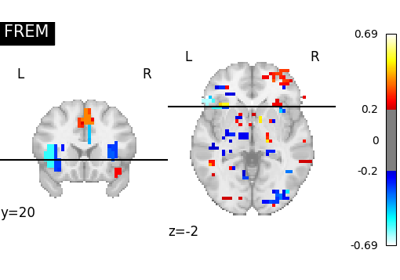Note
This page is a reference documentation. It only explains the function signature, and not how to use it. Please refer to the user guide for the big picture.
nilearn.datasets.fetch_mixed_gambles¶
- nilearn.datasets.fetch_mixed_gambles(n_subjects=1, data_dir=None, url=None, resume=True, return_raw_data=False, verbose=1)[source]¶
Fetch Jimura “mixed gambles” dataset.
See the dataset description for more information.
- Parameters:
- n_subjects
int, default=1 The number of subjects to load. If
Noneis given, all the subjects are used.- data_dir
pathlib.Pathorstror None, optional Path where data should be downloaded. By default, files are downloaded in a
nilearn_datafolder in the home directory of the user. See alsonilearn.datasets.utils.get_data_dirs.- url
stror None, default=None URL of file to download. Override download URL. Used for test only (or if you setup a mirror of the data).
- resume
bool, default=True Whether to resume download of a partly-downloaded file.
- verbose
boolorint, default=1 Verbosity level (
0orFalsemeans no message).- return_raw_data
bool, default=False If
False, then the data will transformed into an(X, y)pair, suitable for machine learning routines.Xis a list ofn_subjects * 48Nifti1Imageobjects (where 48 is the number of trials), andyis an array of shape(n_subjects * 48,).
- n_subjects
- Returns:
- data
Bunch Dictionary-like object, the attributes of interest are:
‘zmaps’:
listofstrPaths to realigned gain betamaps (one nifti per subject).‘subject_id’: pd.DataFrame of subjects IDs
‘gain’:
listofNifti1ImageorNoneIfreturn_raw_dataisTrue, this is a list ofn_subjects * 48Nifti1Imageobjects, else it isNone.‘y’: DataFrame of shape
(n_subjects * 48,)orNoneIfreturn_raw_dataisTrue, then this is a DataFrame of shape(n_subjects * 48,), else it isNone.‘description’: data description
- data
Notes
If the dataset files are already present in the user’s Nilearn data directory, this fetcher will not re-download them. To force a fresh download, you can remove the existing dataset folder from your local Nilearn data directory.
For more details on how Nilearn stores datasets.
